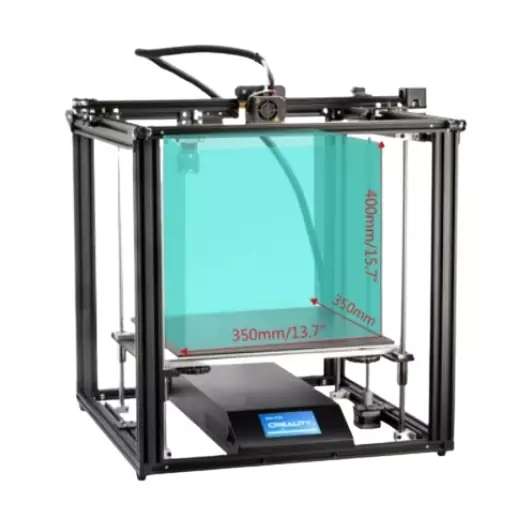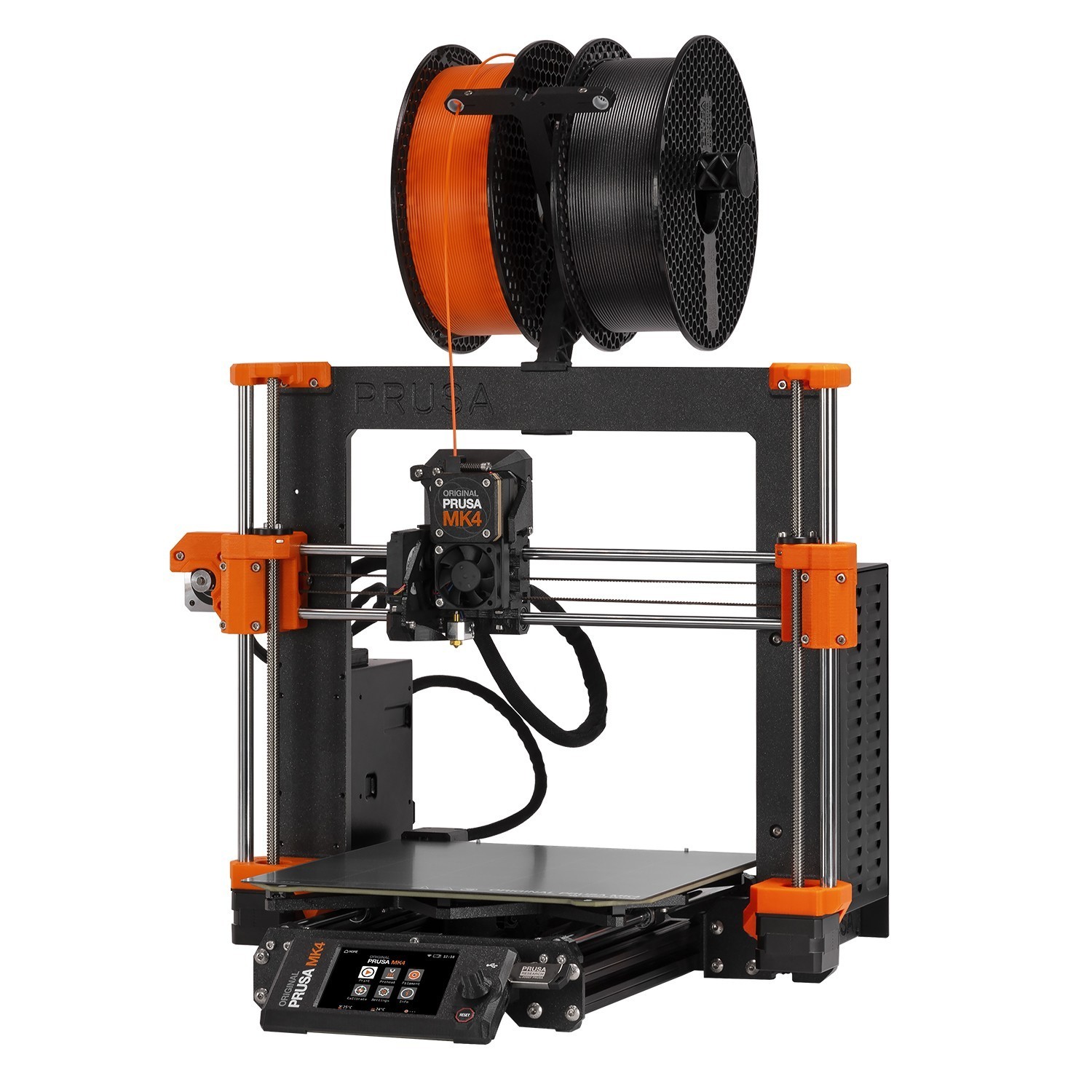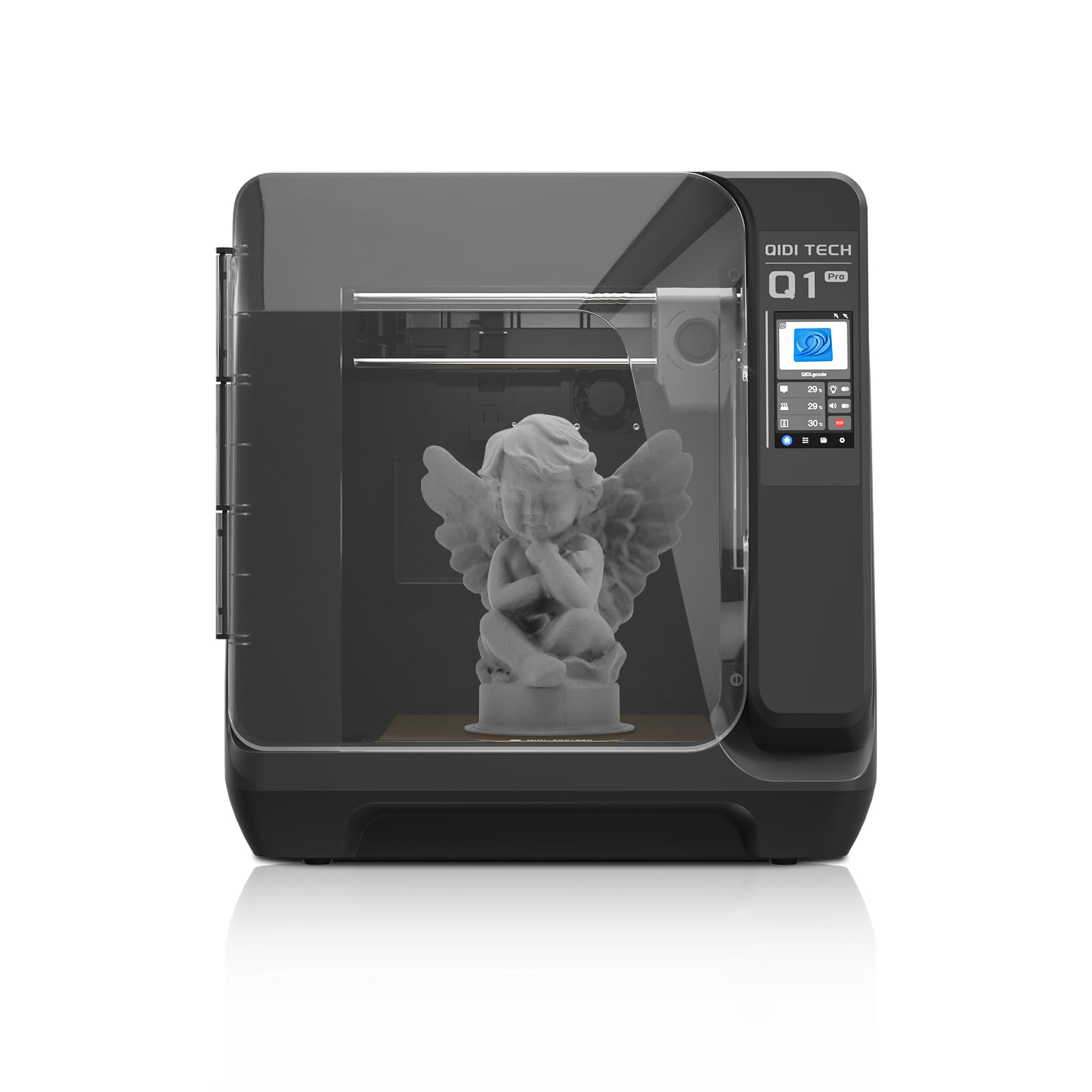Compare Ender 5 Plus vs Original Prusa MK4 3D Printer vs Q1 PRO
Comparison between the best 3D printers
Choose the best 3D printer at the best price. The cheapest 3D printers are here.
Buy a 3D printer here with 3D Fila.
 |
 |
 |
|
| Model | Ender 5 Plus[BUY Ender 5 Plus] |
Original Prusa MK4 3D Printer[BUY Original Prusa MK4 3D Printer] |
Q1 PRO[BUY Q1 PRO] |
| Printing Material | Filament | Filament | Filament |
| Estimated price | $599,00 | $1099,00 | $449,00 |
| Fabricante | Creality 3D | Prusa | QIDI |
| Release Year | 2019 | 2023 | 2024 |
| Print Volume [mm] | 350x350x400 | 250x220x210 | 245x245x245 |
| Printer Size [mm] | 632x619x666 | 500x400x550 | 467x477x489 |
| Weight [kg] | 18,2 | 7 | 20 |
| Power Loss Recovery | YES | YES | YES |
| Enclosed printer | NO | NO | NO |
| Bed Leveling | Automatic | Automatic | Automatic |
| Filament End Sensor | YES | YES | YES |
| Bed type | Heated | Heated | Heated |
| Power supply system | Bowden | Direct Drive | Direct Drive |
| Standard nozzle | 0,4 | 0,4 | 0,4 |
| Maximum Nozzle Temperature [°C] | 260 | 300 | 350 |
| Maximum Bed Temperature [°C] | 100 | 120 | 120 |
| Maximum printing speed [mm/s] | 180 | 180 | 600 |
| Filament holder | YES | YES | YES |
| Camera for supervision | NO | NO | YES |
| Recommended filaments | PLA, TPU, ABS, PETG | PLA, ABS, PETG, PC, Nylon, Tritan, PP | PLA、ABS、ASA、PETG、TPU、PC、PA、PA-CF、PET-CF、PAHT-CF etc. |
| Recommended slicers | Cura, Simplify, Slic3r | Cura, Simplify, Slic3r, IdeaMaker, PrusaSlicer e outros | QIDI Slicer/Cura/Simplify 3D/ORCA/PRUSA Slicer |
| Maximum Resolution [mm] | 0,1 | 0,1 | 0,1 |
| Processor | 32 bits | Custom 32-bit xBuddy electronics with STM32 | Cortex-A53,64-bit Processor |
| Display | Touchscreen TFT 4,3'' | Display touchscreen 3,5'' | Touchscreen 4,3'' |
| Power Supply | 24V / 504W | 240 W | 350 W |
| Connectivity | SD / USB | USB / Wi-Fi / internet via Prusa Connect | WiFi/USB Flash Drive/Ethernet Cable |
| Operating systems | Windows, Mac, Linux | Windows, Mac, Linux | Windows, Linux, Macbook |
| Date of registration in the system | 2021-04-14 | 2023-06-06 | 2024-07-09 |
| Release date | 2019 | 2023 | 2024 |
| Extra features | The Ender 5 Plus offers a large print volume (350x350x400 mm) and fast assembly. It includes a BLTouch sensor, but with range limitations. It stands out for its dimensional accuracy, although it requires adjustments to the slicer settings. Despite the noise, its integrated design saves space, and includes features such as a filament sensor and power resumption. Ideal for large projects, it requires refinement in the settings for high-quality prints. | The Original Prusa MK4 stands out with automatic first-layer calibration via Loadcell sensor, high-speed enabled by Input Shaper and Nextruder for precise prints. It includes quick-change nozzles, customizable UI, and Ethernet/Wi-Fi connectivity. It supports a wide range of materials, from PLA to flexibles. Equipped with a 32-bit xBuddy mainboard and precise stepper motors, it offers exceptional print quality, enhanced security, and remote printing options via Prusa Connect. | The QIDI Q1 Pro 3D printer stands out for its Core XY structure and heating chambers that reach up to 60ºC, ideal for advanced materials such as ABS and Nylon. It features Klipper firmware, an automatic leveling system, a high-flow extruder with a double metal nozzle and a hotend that reaches 350ºC. It offers connectivity via Wi-Fi, USB and Ethernet, as well as a 1080p camera for remote monitoring and an intuitive touchscreen for easy operation. |
| Support for multiple colors and materials (AMS and CFS) | NO | NO | NO |
Notes * |
|||
| Cost-benefit | 6 / 10 | 6 / 10 | 8 / 10 |
| Hardware | 2 / 10 | 3.2 / 10 | 5.4 / 10 |
| Screen | . | . | . |
| Print volume | 4 / 10 | 3 / 10 | 3 / 10 |
| Performance | 1 / 10 | 1 / 10 | 5 / 10 |
| [BUY Ender 5 Plus] | [BUY Original Prusa MK4 3D Printer] | [BUY Q1 PRO] |
Conclusion |
| In conclusion, when comparing the Ender 5 Plus, Original Prusa MK4, and QIDI Q1 Pro 3D printers, each model presents unique strengths and weaknesses, making them suitable for different user needs and budgets. The **Ender 5 Plus** offers a good value with its large print volume and cost-effectiveness. While it requires some tuning for optimal results, its decent build quality and basic features like the power loss recovery and filament sensor make it appealing for hobbyists and larger projects. However, it scores lower in performance and hardware, meaning it might not meet the demands of advanced users. The **Original Prusa MK4**, with its higher price point, brings advanced technology to the table, including precise calibration and a wide range of compatible materials. Its excellent print quality, combined with features such as remote printing capabilities, positions it as a strong choice for serious makers and professionals who prioritize reliability and versatility. However, the higher cost may be a barrier for some. The **QIDI Q1 Pro** stands out for its high-temperature capabilities and user-friendly features like a built-in camera for monitoring prints. With a competitive price and decent performance, it appeals to those looking for a machine that can handle advanced materials while still being accessible for less-tech-savvy users. Ultimately, if budget is a primary concern, the QIDI Q1 Pro offers a strong balance of features and price. For those willing to invest more for enhanced print quality and features, the Original Prusa MK4 is worth considering. Meanwhile, the Ender 5 Plus remains a solid choice for hobbyists focused on larger print sizes without breaking the bank. Each printer has its niche, and the best choice will depend on individual printing needs and financial considerations. |

